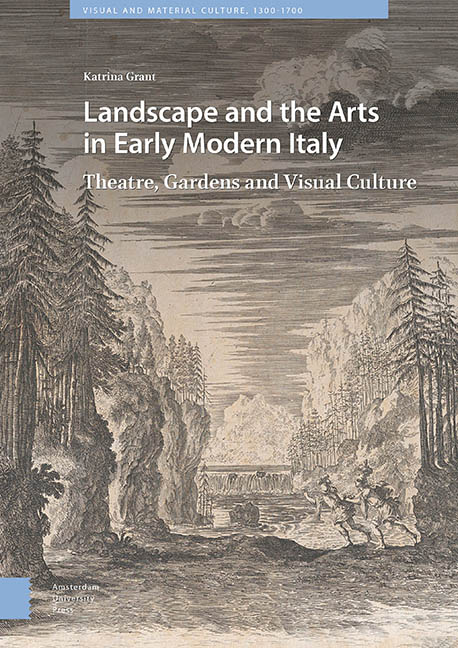Book contents
- Frontmatter
- Contents
- Acknowledgements
- Introduction
- 1 Theatricality, a View from the Landscape
- 2 Gardens of the Gods : Classical Revival, Intermedi, Early Opera and the Idea of Nature
- 3 The (Singing) Figure in the Landscape
- 4 Triumph over Nature : Machines and Meraviglia on the Seventeenthcentury Stage
- 5 The Theatre in the Landscape : Pliny to Pratolino
- 6 The Garden as Stage, the Visitor as Performer
- 7 Stages without Actors : Theatres of Sculpture, Water and Flowers
- 8 Performing in the Parrhasian Grove : Green Theatres and the Academies
- Bibliography
- Index
2 - Gardens of the Gods : Classical Revival, Intermedi, Early Opera and the Idea of Nature
Published online by Cambridge University Press: 15 September 2022
- Frontmatter
- Contents
- Acknowledgements
- Introduction
- 1 Theatricality, a View from the Landscape
- 2 Gardens of the Gods : Classical Revival, Intermedi, Early Opera and the Idea of Nature
- 3 The (Singing) Figure in the Landscape
- 4 Triumph over Nature : Machines and Meraviglia on the Seventeenthcentury Stage
- 5 The Theatre in the Landscape : Pliny to Pratolino
- 6 The Garden as Stage, the Visitor as Performer
- 7 Stages without Actors : Theatres of Sculpture, Water and Flowers
- 8 Performing in the Parrhasian Grove : Green Theatres and the Academies
- Bibliography
- Index
Summary
Abstract
This chapter looks at the rich culture of performance and spectacle that emerged over the course of the sixteenth century with the revival of classical plays and the adoption of the perspective stage set. This culminated in a series of performances in Medici Florence around 1600 that gave birth to opera. Stage sets played a crucial role in the transformation of opera into an immersive environment that transcended sound to appeal to all the senses simultaneously. Already in the intermedi, one of the precursors to opera, gardens and landscapes played a key narrative role, with designs by artists such as Bernardo Buontalenti often mirroring new designs in gardens. As well, the concern for verisimilitude and ‘unity of place’ in the first operas meant that the settings tended to be pastoral settings because it seemed more plausible that characters such as shepherds, shepherdesses, and nymphs would sing their speech. This meant that the powerfully emotional music and poetry of the first operas, with their themes of love and loss of love, tended to be closely associated with landscape settings.
Keywords: Medici, Opera, Stage Sets, Theatre, Bernardo Buontalenti
The best part of all these plays and feste has been the scenes against which they were performed, which were made by one Maestro Pellegrino: there is a road and a perspective of a town with houses, churches, bell towers and gardens such that one can never tire of looking at because of the variety of things in it, all cleverly contrived and well-planned. – Bernadino Prosperi on the set for Ariosto's La Cassaria, 1508.
A stage is a solid structure on which are erected sets made of wood, paint and other tangible materials designed to conjure up a fictitious space in which narratives unfold. The type of setting—woodland, city, palace—conveyed meaning by making tangible the place in which the narrative was enacted, and through the symbolic associations that certain spaces and places held for the audience. Set designs were not only integral parts of most dramatic performances, but also constituted a significant part of European visual culture from the sixteenth century onward. Contemporary discussions of the history of sets have tended to focus upon the architectural settings, the cityscapes rendered in one-point perspective by Renaissance architects like Baldassare Peruzzi or Vincenzo Scamozzi, or the elaborate, fantastical interiors created by the Bibiena family.
- Type
- Chapter
- Information
- Landscape and the Arts in Early Modern ItalyTheatre, Gardens and Visual Culture, pp. 45 - 80Publisher: Amsterdam University PressPrint publication year: 2022



